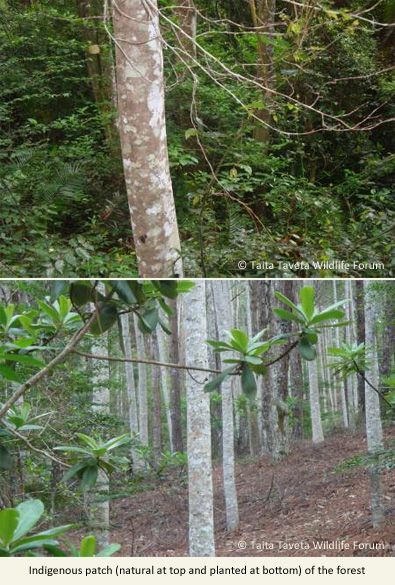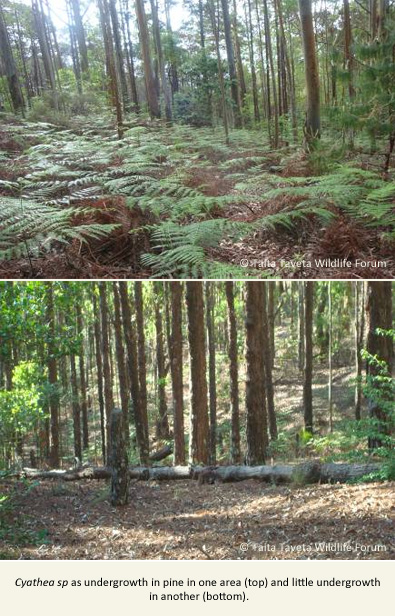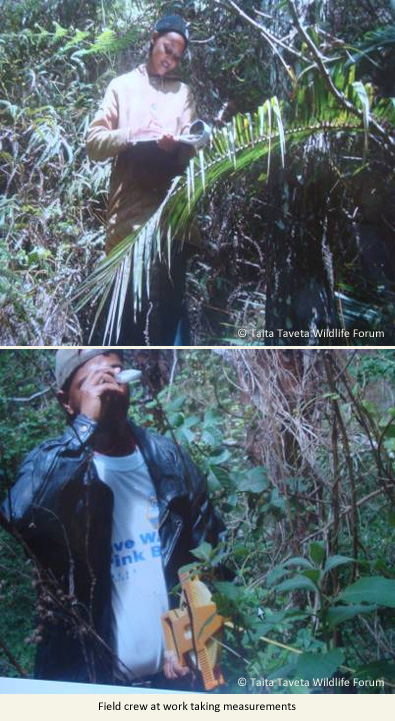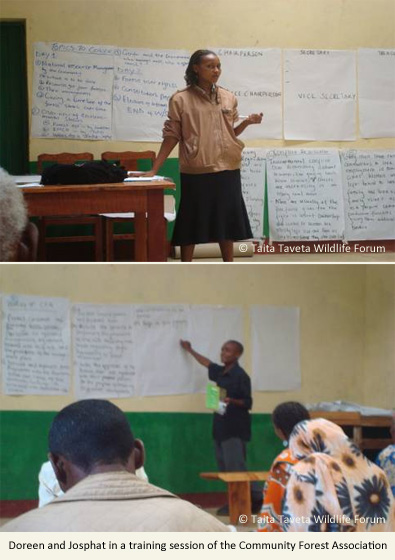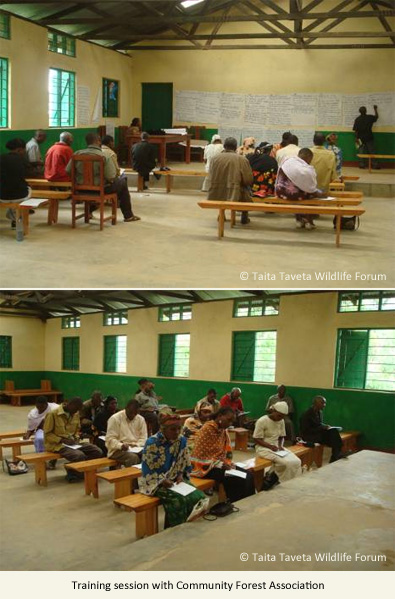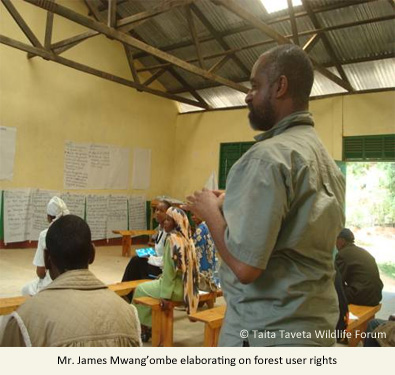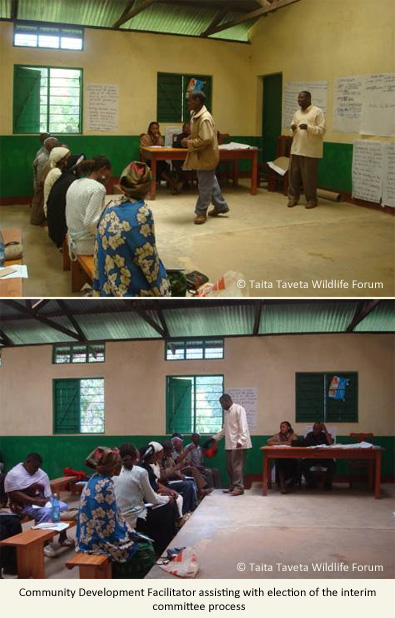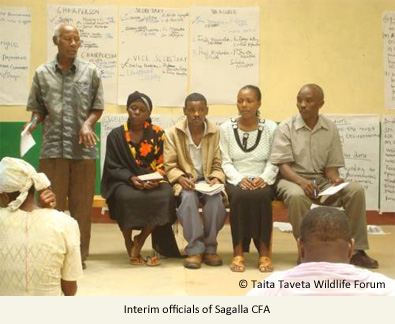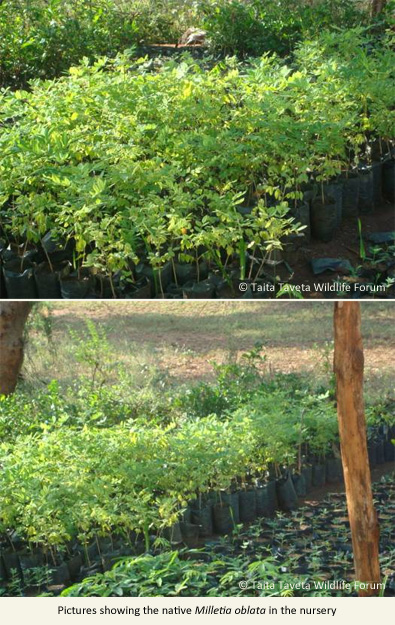Forest Inventory and data collection in Sagalla Forest was done in the month of November 2009.
Method
The field plots were of size 50 by 20 with subplot of 10 by 10, with the bigger plots located along the transect running from SW to NE of the forest. The length of transects were determined by the forest boundaries from both ends. The transects were located 100m apart while the plots 80m apart with 180 and 90 degrees angle of elevation respectively regardless of the contours. The GPS points of every plot were also taken.
The tree sample were those of diameter at breast height (dbh) 12.7cm or more, while sapling were those trees with dbh <12.7 > 2.54cm. Seedling were those of dbh 2.54 and height of >15 cm. Stratified random sampling method was used where a random point was picked as a first point where first transect was marked.
The number of plots along the transect was determined by the length of the transect, while length of the transect was determined by the forest boundaries. All the sampling sub-plot were randomly picked from the left side of the plot. Tree and saplings were sampled clockwise from azimuth 0-360 degrees.
Field measurements were done using three main variables – tree species, diameter at breast height and height.
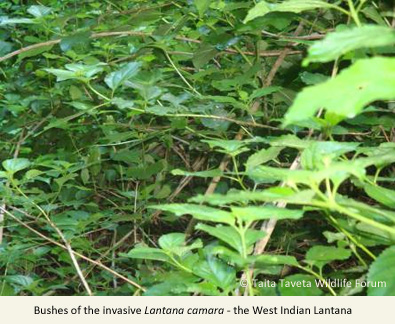
Results
There were a total of 21 species sampled the dominant being Pinus patula and Eucalyptus species. The few indigenous trees were mostly found in riverine areas e.g. Mwajika while a few inside the sampling plots which are said to have been planted.
Saplings:
There was a total of 18 species among the saplings sampled.
Seedlings:
Only 7 species and few in number per plot (<5) were recoded most of which were Garcinia volkensii. There is little undergrowth with litter of Pinus patula and Eucalyptus sp which take time to decompose, hence suppressing the growth/emergence of the indigenous plants. Other areas are covered by Cyathea sp.
An important observation made was the presence of an invasive species – Lantana camara (image above) – and action needs to be taken to ensure its spread is controlled so that it does not overrun even the small indigenous patches.
Activities for Participatory Forest Management
A Workshop was held on 29th and 30th of January 2010 for the preparation of the Articles of Association and also to prepare the Application Forms for the Sagalla Community Forest Association (SCFA). Kenya has embraced Participatory Forest Management as an approach towards sustainable forest management. This is out of the realization that involvement of the wider stakeholders would significantly contribute towards sustainable management of forest. In this approach local communities and other stakeholders participate in management of forest resources, as provided for by the Forest Act 2005.
Several sensitization meetings have been held with the interim committee of the SCFA to build their knowledge with regard to participatory forest/natural resource management and for the drafting of the Participatory Forest Management Plan.
In addition to the CFA representatives and facilitators from the Taita Taveta Wildlife Forum, officials from the government institutions were also involved, among them the Zonal Manager of Taita Taveta Zone from the Kenya Forest Service (KFS), the local KFS forest extension agent, and the Community Development Facilitator from the County Council of Taita Taveta.
During the workshop several topics were covered as follows;
• Participatory natural resource management.
• Policy and law on natural resource management – Overview of environmental statutes where relevant sections were elaborated in Forest Act 2005, Water Act 2002, EMCA 1999, Agriculture Act, Wildlife Conservation and Management Act, Local government Act.
• Gender and the Environment – how the issue of gender relates to environmental conservation.
• Other topics included Forest User Rights, Constitution preparation and Election of interim committee.
An Interim committee was elected by the CFA representatives from among themselves under the direction of the Community Development facilitators. After the interim committee were taken through the CFA constitution making process, Participatory Forest Management Plan making and the process of entering into a PFM agreement. The Constitution has been prepared and the process for registration has been initiated.
Forest Rehabilitation and Tree Planting
4,000 tree seedlings have been raised for planting, among them Milletia oblata an endemic tree species that no longer occurs in Sagalla forest, but only in the other Taita hills forests. About 700 seedlings of M. oblata are ready for planting awaiting the onset of the rainy season. These will be used to re-introduce the tree species in the area.
